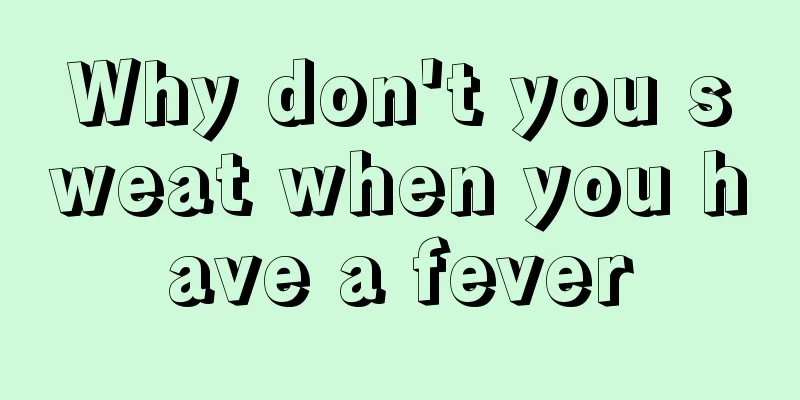Why don't you sweat when you have a fever

|
People say that if you sweat when you have a fever, the fever will go down quickly. However, some people do not sweat when they have a fever. This can make people anxious, especially when it happens to children. Fever does not necessarily require sweating, nor does it require covering with a lot of things to reduce the fever. Myth 1: If a child feels hot, he or she has a fever. Fact: There are many reasons why children feel hot. Playing vigorously, crying, just getting out of a warm bed, or being outdoors on a hot day can all cause the body to heat up. But in these cases, the child's skin temperature will return to normal within 10-20 minutes. When the above reasons are ruled out, if the child still feels hot or uncomfortable, there is an 80% chance that he or she actually has a fever. The following are the fever standards when taking body temperature: anus, ear or temporal artery: 38℃ and above; oral cavity: 37.8℃ and above; axillary: 37.2℃ and above. Myth 2: Fever is harmful to the body. Fact: Fever activates the body's immune system and is one of the body's protective mechanisms. A normal fever (37.8-40℃) can help sick children fight infections in the body and is usually good for the body. Myth 3: Fever can damage the brain (a fever over 40°C is dangerous). Fact: Fever combined with infection does not cause damage to the brain. Fever will only cause damage to the brain when the body temperature is higher than 42℃. And body temperature will only rise to this level when the body is exposed to extreme ambient temperatures. (For example, leaving children in a closed car on a hot day) Myth 4: Children are prone to convulsions due to fever. Fact: Only 4% of children will experience a febrile seizure. Febrile convulsions are often manifested by sudden loss of consciousness, upward rolling of the eyeballs, facial muscle rigidity, spasms or convulsions, etc. Experts point out that even without drug treatment, most children's convulsions may be relieved in a short period of time, so parents should not move their children at will, and pay attention to keeping their children's heads to one side to prevent suffocation due to accidental aspiration. Myth 5: Febrile seizures are harmful. Fact: Although febrile seizures may look scary, they usually stop within 5 minutes and do not cause permanent damage to the body. It also does not put children at greater risk. However, the next time you have a fever, there may be a tendency for it to relapse. If the seizure lasts more than 5 minutes, go to the hospital for treatment immediately. |
<<: Constant sweating in summer
>>: What to do if you sweat under the liquid
Recommend
Will kidney deficiency cause headaches?
Modern people are under great pressure in life, a...
Are there many cases of teratoma being cured?
Experts say that teratoma is a benign gynecologic...
What is the best treatment for colon cancer
How to scientifically treat patients with colon c...
How long can a patient with advanced liver cancer live in a coma
There is no clear answer to how long you can live...
How to remove oil stains from clothes
In our daily lives, we cannot avoid contact with ...
Why do I urinate frequently in winter?
Many people usually have such symptoms. When the ...
Where is the male bladder?
In clinical practice, doctors often encounter pat...
Introduction to the symptoms and treatment of acute cholecystitis
The most obvious symptom of acute cholecystitis i...
My hair becomes oily right after washing
The correct way to wash your hair is two to three...
Does drinking coffee give you bad breath?
Coffee is a very common drink in our lives. Wheth...
What are the effects of a headache after getting a rabies vaccine
Generally speaking, the body will experience some...
Daily exposure to the sun or ultraviolet radiation can easily induce the cause of skin cancer
Among the world's population, skin cancer mai...
The benefits of drinking yogurt during confinement
Yogurt products are loved by most people. Yogurt ...
What to do if you can't think before you speak
Everyone may have encountered a similar phenomeno...
Is milk powder better or pure milk?
Among the types of milk on the market now, milk p...









